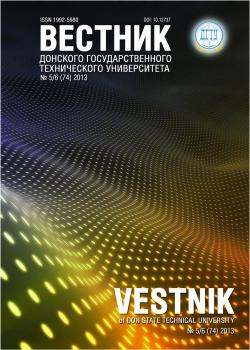The study objective is to review the prerequisites for reducing the time of transport movements of the road-building machinery. On the basis of the information received, the corresponding recommendations used in the performance control system and technical audit can be elaborated. Shortcomings of the existing monitoring systems are marked. It is shown that their application to improve the technical-and-economic efficiency of the road vehicles does not allow achieving the controlled results. The technical-and-economic effect should be assessed by the unit cost criterion taking into account the cost for ownership. To calculate such a criterion, it is necessary to have the source information that can be obtained by monitoring. At a minimum criterion, there are work perfor-mance and operating quality time limits. The possibility of imple-menting restrictions on the time performance which largely de-pends on the machine transportation operations time is considered. Transport operations, in turn, are determined by the stability level, so to elaborate recommendations on reducing the transport operations time it is necessary to evaluate the stability by special calculating formulas. Various options for calculating are considered, the option of differential rocking equations is selected. It is noted that the working process is better described by the loading workflow diagrams, so they should be built on the basis of differential equa-tions. An example of the loading diagram construction for a front loader is given. The application of loading diagrams to elaborate recommendations on reducing the transport operations time is shown.
monitoring system, efficiency, sustainability, moving time, technical audit, efficiency criterion.
Анализ существующих систем мониторинга эффективности дорожных машин выявил факт реги-страции технических показателей без учета экономических данных [1]. Нет сведений о наличии аналитического цен-тра, в котором могли бы производиться расчеты по специализированным методикам. Таким образом, существующие мониторинговые системы не обладают функционалом количественной оценки технико-экономической эффективно-сти, что препятствует оценке вводимых мероприятий. В частности, невозможно оценить чувствительность систем машин по показателям экономии денежных средств к вводимым управляющим воздействиям.
Для заданных условий эксплуатации наилучшей будет машина, при помощи которой можно выполнить зада-чу с наименьшими затратами (показатель 1) за приемлемые сроки (показатель 2) при приемлемом качестве (показа-тель 3). Каждый из трех перечисленных показателей можно использовать в качестве критерия. Однако недостаточ-ность исходной информации создает известные проблемы при использовании этого критерия. Поэтому величину за-трат целесообразно оценивать в соизмерении с работой при помощи удельной величины — себестоимости единицы продукции с учетом затрат на владение (СЕПВ). Такой подход позволяет использовать результаты оценки при выпол-нении технического аудита в качестве инструмента для выявления направлений развития эксплуатационного пред-приятия или производства (см., например, [2–5]).
Все три показателя не могут одновременно достичь экстремума, поэтому часть из них целесообразно ограни-чить. Из перечисленных трех показателей только один (СЕПВ) позволяет оценивать прибыль — наиболее значимый фактор при определении эффективности. Соответственно, в качестве целевой функции целесообразно выбрать мини-мизацию СЕПВ.
Итак, при мониторинге технико-экономической эффективности дорожных машин будут учитываться в каче-стве основных:
— целевая функция — минимум СЕПВ,
— ограничение — показатель (параметр) времени выполнения работы,
— ограничение — показатель (параметр) качества работы.
1. Mandrovskiy, K.P. Sistemy monitoringa dorozhno-stroitel´nykh, transportnykh mashin i dorozhnykh pokrytiy. [Monitoring systems of road-building, transport vehicles and road surfaces.] Interstroymekh-2015: mat-ly mezhdunar. nauch.-tekhn. konf. [Interstroymekh-2015: Proc. Int. Sci.-Eng. Conf.] Kazan, 2015, pp. 310-315 (in Russian).
2. Hiwase, P.-D., Raman, N.-S., Hajare, H.-V. The Role of Technical Audit in Environmental Impact Assess-ment. International Journal of Innovative Research in Science, Engineering and Technology, 2013, vol. 2 (3), pp. 664-669.
3. Srivastava S. B. Technical Audit - A Throughfare of System Perfection. International Journal of Scientific & Engineering Research, 2012, vol. 3 (1), pp. 98-110.
4. Vokina, Е.B. Osnovy promyshlennogo i tekhnicheskogo audita. [Basic principles of industrial and technical audit.] Vestnik transporta Povolzhya, 2011, no. 5 (29), pp. 21-27 (in Russian).
5. Palkin, S.V. Tekhnicheskiy audit v sisteme menedzhmenta. [Technical audit in management system.] Railway Transport, 2009, no. 4, pp. 38-42 (in Russian).
6. EULER. Programmnyy kompleks avtomatizirovannogo dinamicheskogo analiza mnogokomponentnykh mek-hanicheskikh sistem. [EULER. Software for automated dynamic analysis of multi-component mechanical systems.] Avtomek-hanika CJSC. Available at: http://www.euler.ru/ (accessed: 28.07.15) (in Russian).
7. Simulink. Graficheskaya sreda imitatsionnogo modelirovaniya. [Simulink. Graphical simulation environment.] Softline. Available at: http://matlab.ru/products/simulink (accessed: 28.07.15) (in Russian).
8. Alexeeva, Т.А. Matematicheskoe modelirovanie sluchaynykh dorozhnykh vozmushcheniy pri issledovanii dina-miki mobil´nykh mashin. [Simulation of occasional road disturbances for mobile vehicles dynamic studies.] St. Petersburg Pol-ytechnic University Journal: Physics and Mathematics, 2015, no. 2 (218), pp. 118-122 (in Russian).
9. Zhulay, V.А., Kozlov, V.A., Shchienko, A.N. Dinamika defektnykh kardannykh peredach stroitel´nykh i dorozh-nykh mashin. [The Dynamics of Defective Cardan Drives of Building and Road Machines.] News of higher educational insti-tutions. Construction, 2008, no. 1, pp. 72-78 (in Russian).
10. Li, S.V., Akhmetov, G.M., Yesengaliev, M.N. Dinamika mnogorotornykh rabochikh organov stroitel´no-dorozhnykh mashin. [Dynamics of multiple-rotor working bodies of road construction machinery.] Karaganda State Technical University. University Proc., 2007, no. 3, pp. 67-68 (in Russian).
11. Pliev, S.Kh. Raschet dvukhosnoy kolesnoy mashiny na ustoychivost´ protiv oprokidyvaniya. [Calculation for biax-ial wheeled vehicle to rollover stability.] Journal of Proceedings of the Gorsky SAU, 2015, vol. 52, no. 1, pp. 124-127 (in Russian).
12. Prokhorova, Е.V. Metodika otsenki ustoychivosti ekskavatora, oborudovannogo bystrosoedinitel´nym ustroystvom. [Valuation technique for stability of the excavator equipped with a quick coupling device.] Innovatsionnye mate-rialy, tekhnologii i oborudovanie dlya stroitel´stva sovremennykh transportnykh sooruzheniy : mezhdunar. nauch.-prakt. konf. [Innovative materials, technologies and equipment for the construction of modern transport facilities: Int. Sc.-Pract. Conf.] Belgorod State Technological University named after V.G. Shukhov, 2013, vol. II, pp. 180-185 (in Russian).
13. Pliev, S.Kh., Aguzarov, T.T. Raschet staticheskoy i dinamicheskoy ustoychivosti tritsiklov. [Calculation of static and dynamic stability of tricycles.] Journal of Proceedings of the Gorsky SAU, 2014, vol. 51, no. 4, pp. 216-225 (in Russian).
14. Mandrovskiy, K.P. Dinamika i matematicheskoe modelirovanie dvizheniy mashin pri otsenke ustoychivosti. [Dy-namics and mathematical modeling of the machine movement when assessing sustainability.] Moscow: MADI, 2012, 72 p. (in Russian).
15. Mandrovskiy, K.P. Modelirovanie i otsenka ustoychivosti samokhodnykh mashin. [Simulation and stability rating of self-propelled vehicles.] Saarbrucken: LAP LAMBERT Academic Publishing, 2012, 85 p. (in Russian).





